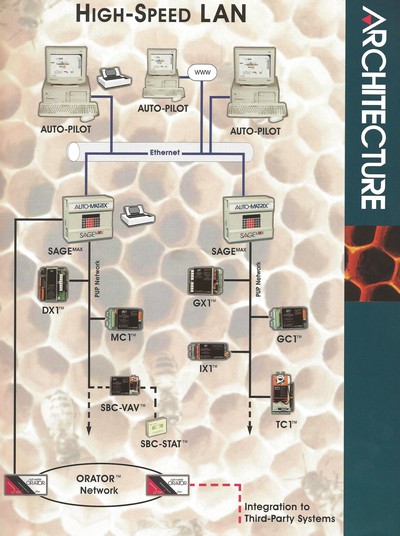A Pricey However Worthwhile Lesson in RS485 Standard
페이지 정보

본문
Before we discuss polarity lets take a look at logic levels and binary states. RS-232 defines the voltages of these circuits, and the polarity of the logic generating the voltage. RS-422 includes the voltage levels of the two wires when a binary 0 or 1 is on the RS-422 lines, but specifically excludes the logic function of the generator or receiver. A third interface is defined as a transceiver, which has both a generator and receiver. When two pair of wires are used for full-duplex communications, one pair is used for the interface generator (driver) to talk to the other device(s) on the RS-422 network, and the second pair is the interface receiver used to listen to an other device (not devices, since only one driver can be on this pair of wires) on the network. This limits most RS-422 bidirectional networks to two devices that talk to each other. This means that in a master/slave configuration, a master can talk to multiple slaves, but only one slave can talk back to the master. This allowed users in manufacturing facilities to connect larger applications and whole machines with one protocol. However, the GSS, SST, Cubic, and Luminox optical gas measurement sensors only use serial UART (Rx/Tx) with no direction control so they cannot support the RS485 or Modbus protocol.
There are devices that actually have such a properly isolated RS485 transceiver and DO NOT have a signal ground terminal. There are devices boasting a so-called "tri-galvanic" isolation - such as async modems or RS232/485 converters. USB to serial converters come with ADDC (Automatic Data Direction Control) to automatically sense and control data direction, making the handshaking control method obsolete. The problem with this is that a particular method of grounding may be required for one installation to function and cause damage at another. The modem may be limited to half-duplex communications, and therefore the link between the two computers is half-duplex. RS-232 only defines connecting DTE to DCE, so when two computers are connected together this is outside of the standard. Other reasons that some RS-232 ports were half-duplex: some very old UARTs may be half-duplex limiting the system, and some very old computers drove the RS-232 drivers directly from the processor without a UART. These old and slow microprocessors did not always have the horsepower to monitor the timing of both the incoming and outgoing bits, limiting the system to half-duplex. The RS-232 standard includes secondary serial data circuits (secondary TX data, and secondary RX data), three clocks (timing elements) for synchronous serial data transfer, Signal Quality Detector, and more.
Clearly not all of these circuits or signals are included in IBM’s implementation (very few implementations use secondary data lines or many of the other circuits). In addition to the 21 circuits, the shield may be connected to pin 1, pins 9 and 10 are "Reserved for Testing", and pin 11 is "unassigned". This creates a fail-safe bias voltage that causes the negative terminal to have a lower voltage than the positive terminal and the output of the comparator to be in a known high state when applying a 0-V differential voltage to the A and B pins. The RS-232 standard defines a DB-25 and a 26-pin alternate connector, the function of each of the pins in the connector (called circuits), and the electrical characteristics of the signals that are on the "circuits". This is a rather convoluted way of saying pin 7 of the DB-25 connector is used as a signal common. A fourteenth interface type, lettered Z, is reserved for applications not covered by types A through M. All of the circuits on interface type Z (except Signal Common) are optional and are to be specified by the supplier.

A common and incorrect assumption is that the RS-232 standard defines the bit protocol of the data being transferred asynchronously through the UART. Again, this protocol is not part of the RS-232 standard, even though many engineers think of this protocol as "RS-232". There are other electrical characteristics in the standard, but you should be getting the idea that RS-232 specifies the connector, signals, and electrical characteristics. The RS-422 standard title is "Electrical Characteristics of Balanced Voltage Digital Interface Circuits". RS-422 specifies the electrical levels of one transmitter to one of more receivers on a single pair of wires. This standard specifies the electrical characteristics of a single transmitter and up to ten receivers on a single pair of wires. The RS-485 standard title is "Electrical Characteristics of Generators and Receivers for Use in Balanced Digital Multipoint Systems". The RS-232 standard title is "Interface Between Data Terminal Equipment and Data Circuit Terminating Equipment Employing Serial Binary Data Interchange".
If you beloved this short article and you would like to receive much more data pertaining to RS485 standard kindly visit the site.
- 이전글3 Cures For Male Pattern Baldness - Don't Ignore This! 24.05.22
- 다음글Eight Home Remedies For Seasonal Allergies - PharmEasy Blog 24.05.22
댓글목록
등록된 댓글이 없습니다.







